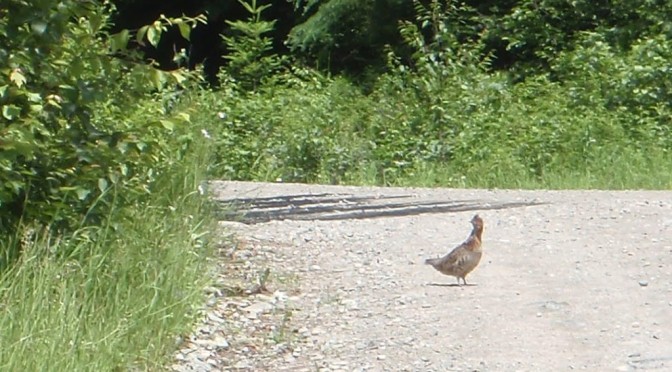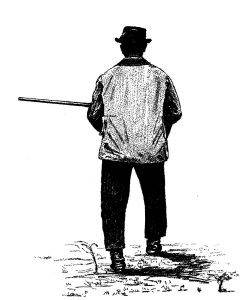At the time of the American Revolution approximately 90% of New England was open land while today that number is somewhere south of 15%. Even when I was growing up north of Boston in the 1950s the street I lived on was surrounded by fields and woods which were all gone by the time I left the area in 1969. In Northern New Hampshire there were many subsistence farms. The property here at the kennel was a dairy farm until 1963 and the hill behind the house that is currently being logged for the second time since they stopped farming it, was an open pasture as was the rest of the higher ridge behind the house. For a long period of time starting in the early days of the 20th century most of those old farms were given up and allowed to revert to forest. It was during that time, that the classic New England grouse and woodcock covers emerged and a golden age of grouse hunting existed. These glory days were immortalized by writers like William Harden Foster, Burton Spiller, and others.
This year, Wolfe Publishing (Upland Almanac) has reprinted two very short works from that period in one limited edition volume. The first, Partirdge Rambles, which only takes up 23 pages was privately published in 1937 and the author was listed as Anonymous hence the drawing above showing the writer only from the back. The second work, Partridge Adventures, published in 1951 lists William H. Claflin, Jr. as the author and he lays claim to also penning the earlier piece. The second work runs to 63 pages but includes some of the material from the first volume. Claflin’s major premise in both works is that partridge hunting is better done by 2 or 3 seasoned still-hunters that do not use dogs. Throughout both books they slowly walk through many old farms in southwest New Hampshire and some lessor amount of time in the area around Sherborne, NY which is just up the road from the well-known Grouse Ridge Kennels.
Throughout these two brief works Claflin devotes a lot of ink to describing the covers he hunts and the spots that he jumps grouse. One aspect of the these works that intrigued me is the fact that from 1931 until the second book in 1951 Claflin kept a detail journal of his hunting experiences. These are capsulized in a few charts in Partridge Adventures and reveal a lot of interesting statistics. One of which was a day where they hunted the Pharsalia grounds in New York where the 1970 Grand National Grouse Championship was run. On that day in 1939 with no dogs to help Claflin and his hunting companions moved 75 birds — his best day ever. By 1970, the top 35 grouse dogs of that year were only able to move 31 grouse before Grouse Ridge Will was named champion. Claflin goes into more detail and figures in the book than I have space and time to describe here, so, suffice it to say that there is some interesting data here.
It’s interesting to note that the lands that Claflin hunted in both New Hampshire and New York are now pretty much mature forest with a scattering of a farm here and there. There is very little early successional forest and most of the old apple trees have been choked out by the shade of their taller neighbors. When I first moved to Northern New Hampshire in the late 70s there were still a number of old farm covers that I could hunt like Claflin without a dog and like him I experienced the sudden thrill of a wild flush of a grouse off an old stone wall or out of a wild apple tree. Today most of those are gone as is the likelihood of having much success as a still hunter pursuing grouse. We need hard running dogs to hunt the cut over industrial forest of the region where birds can be spread out over large tracts. A hunter walking alone with his shotgun at port arms waiting for the flush is mostly going to come home with little besides tired arms.
This reprint of the two books is limited to 250 copies and mine, numbered #83, was a gift from Lynn Mosely of Kingsport, TN who owned Wild Apple LJ before he was hit by a truck and now owns Wild Apple Molly McGee who will be heading to him right after the first of the year. Lynn and I share a passion for grouse hunting and good grouse dogs. LJ was one of those and Molly McGee is showing the potential to be one as well. It is a much appreciated gift and an enjoyable read.



I have to respectfully disagree with the last sentence of your second-last paragraph: “A hunter walking alone with his shotgun at port arms waiting for the flush is mostly going to come home with little besides tired arms.”.
I nearly always hunt grouse alone, & rarely come home with little besides tired arms.
There is an art to grouse hunting alone that, once learned, is very satisfying and productive 🙂